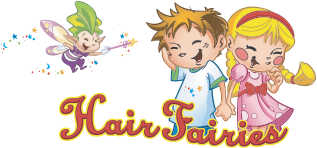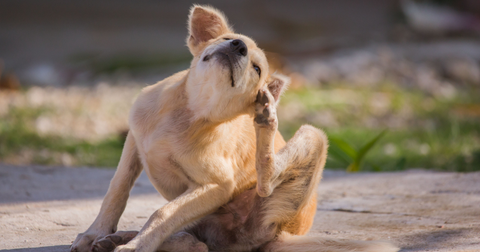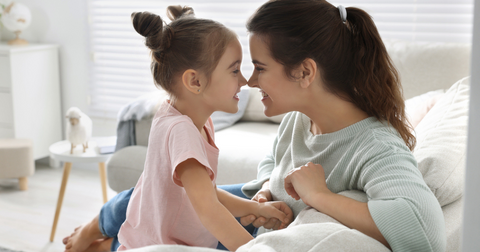Dealing with lice can be a stressful experience, especially for breastfeeding mothers concerned about the safety of treatment options. It's crucial to find solutions that effectively eliminate lice while ensuring the health and well-being of both mother and baby.
This blog post explores safe and effective lice treatments, highlighting natural products and strategies for nursing mothers.
Does Head Lice Affect Breastfeeding?
Head lice, while a nuisance, typically do not directly affect the breastfeeding process. Lice are localized to the scalp and hair and do not influence breast milk production or quality.
However, the discomfort and stress caused by a lice infestation can potentially impact a mother’s overall comfort and well-being during breastfeeding. Here are a few points to consider:
- Comfort During Feeding: An itchy scalp caused by lice can be distracting and uncomfortable, which might affect a mother's ability to relax and comfortably breastfeed.
- Stress and Anxiety: Dealing with lice can be stressful, and high stress levels can sometimes impact milk supply or the breastfeeding experience.
- Safe Treatment While Nursing: It’s important to choose lice treatments that are safe for breastfeeding mothers to ensure there’s no risk to the baby.
Can You Treat Head Lice While Breastfeeding?

Yes, you can safely get treated for lice while breastfeeding. It's crucial to choose lice treatment methods that are both effective and safe for your baby.
While most topical lice treatments are generally considered safe during breastfeeding due to minimal systemic absorption, natural treatments are often recommended for their gentle and non-toxic nature. Manual removal of lice using a fine-toothed comb is also a safe and chemical-free option.
It’s always advisable to consult with a healthcare provider before starting any treatment to ensure it aligns with your specific health needs and those of your baby.
Are OTC and Prescription Lice Treatments Safe?
Over-the-counter (OTC) lice treatments typically contain permethrin or pyrethrin combined with piperonyl butoxide. These are available as shampoos or cream rinses. Prescription options for more persistent cases include medications like malathion, benzyl alcohol, spinosad, and ivermectin hair rinses.
Most topical lice treatments, including those containing permethrin and pyrethrin, are generally considered safe for use during breastfeeding as they have minimal systemic absorption.
However, some treatments like malathion are less studied in the context of breastfeeding, and their safety profile is less clear. The CDC suggests that the amount absorbed through the skin from permethrin or pyrethrin treatments is low, indicating a lower risk for breastfeeding infants.
If using chemical treatments, avoid direct application near the breast area to prevent the baby's exposure during feeding. Additionally, follow the application instructions meticulously and wash hands thoroughly after applying the treatment.
Given the uncertainties and precautions associated with chemical treatments, natural alternatives can be a safer and more comfortable choice for breastfeeding mothers.
Safe Lice Treatment Methods for Breastfeeding Mothers
As a mother, ensuring the safety of both you and your baby is crucial. This is where natural solutions offer peace of mind for breastfeeding mothers.
- Manual Removal: Using a fine-toothed comb to manually remove lice and nits is one of the safest methods. It involves no chemicals and poses no risk of substances transferring to human breast milk.
- Essential Oils: Some essential oils, used cautiously, have been known to deter lice. However, it's important to consult with a healthcare professional before using any essential oils, as some might not be safe for infants.
- Frequent Hair Washing: Regular washing of hair and scalp can help in managing lice, though it may not be completely effective in eliminating them.
Hair Fairies to the Rescue
Our Nit-Zapping product line is specially crafted for families seeking a natural approach to combat and prevent lice infestations.
From our Clenz Cream to our Lice Prevention Spray, each product is designed with the health of breastfeeding mothers and their infants in mind.
- Nit-Zapping Clenz Cream: A gentle yet effective solution designed to combat lice. This cream is formulated with natural ingredients, making it a safer choice for breastfeeding mothers.
- Nit-Zapping Lice Prevention Oil: An oil-based product aimed at preventing lice infestations, as well as nourishing the scalp and hair. Its natural oils are selected for their lice-repelling properties.
- Nit-Zapping Clenz Shampoo: A shampoo that combines cleanliness with lice prevention. Made from natural ingredients, it’s suitable for regular use.
- Heavy Duty Eucalyptus Laundry Detergent: A laundry detergent that plays a crucial role in the overall head lice treatment process. Infused with eucalyptus, known for its natural lice-repelling properties.
- Nit-Zapping Lice Prevention Spray: A handy spray that offers an easy way to apply lice-preventive treatment. Made with natural ingredients, it’s safe to use around infants.
For those seeking professional assistance, Hair Fairies also offers expert salon services for comprehensive lice removal, ensuring complete care for your family's needs.
Lice Prevention Strategies
While treating lice in breastfeeding mothers is crucial, taking steps to prevent lice infestation in your baby is equally important. Here are some simple yet effective strategies to minimize the risk:
- Minimize Direct Contact: Lice spread primarily through head-to-head contact. Keep your baby's head away from others, especially in settings like playgroups or daycare.
- Personal Items: Avoid sharing items that come in contact with the hair, such as hats, combs, brushes, and even bedding. This precaution reduces the chance of transferring lice.
- Regular Checks: Periodically check your baby's scalp, especially behind the ears and at the nape of the neck, for signs of lice or nits.
- Clean Environment: Maintain cleanliness in areas where your baby spends a lot of time, including cleaning and vacuuming car seats, strollers, and play areas.
- Educate Caregivers: Ensure that anyone who looks after your baby is aware of the need to avoid direct head contact and the importance of not sharing personal items.
Keeping Your Loved Ones Safe

Natural solutions, like those offered by Hair Fairies, provide a reassuring balance of safety and efficacy. As you navigate this challenge, remember that effective solutions are available that cater to the unique needs of breastfeeding mothers.
The right approach, be it through home treatments or professional services, ensures peace of mind and the continued health of you and your baby.




Comments (0)
There are no comments for this article. Be the first one to leave a message!